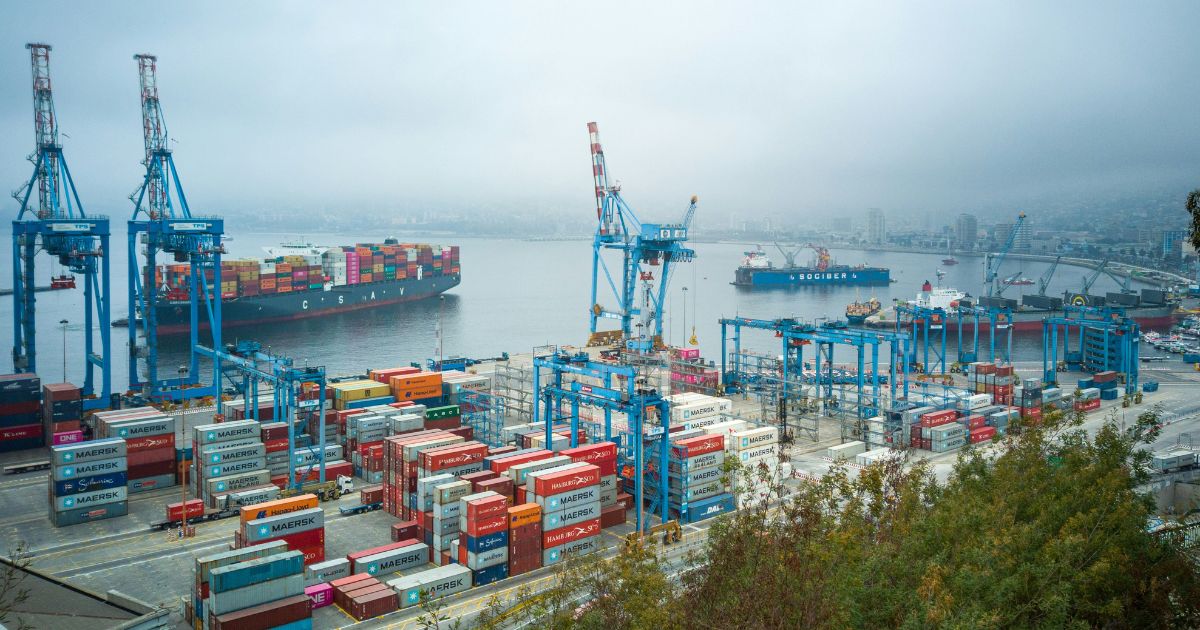How to Manage the Growing Complexity of a Dynamic Supply Chain

Supply chains have evolved into intricate networks, spanning vast geographical distances and involving a multitude of stakeholders. The globalization of markets, coupled with rapid technological advancements and evolving consumer expectations, has created a dynamic environment that presents significant challenges for businesses.
Effective management of a dynamic supply chain requires a delicate balance of strategic planning, technological innovation and robust partnerships. By carefully considering these three essential elements, organizations can navigate the complexities of modern supply chains and ensure the efficient delivery of goods and services to their customers.
Understanding the Dynamic Supply Chain
A dynamic supply chain is a complex network of organizations, people and activities that work together to produce and deliver products or services. What sets a dynamic supply chain apart is its ability to adapt quickly to changing market trends, customer demands and supply chain disruptions. To thrive in today’s business environment, a dynamic supply chain is essential for businesses to remain competitive and meet the evolving expectations of their customers.
To effectively manage a dynamic supply chain, businesses must have a deep understanding of its intricacies and the ability to manage them effectively. Supply chain managers must be able to analyze data, identify trends and make informed decisions to optimize supply chain operations.
The Challenges of a Dynamic Supply Chain
The increasing complexity of modern supply chains is driven by a confluence of factors, requiring businesses to adopt a comprehensive and strategic approach to ensure their efficient operation.
1. Globalization
The globalization of markets has significantly increased the complexity of supply chains. Businesses are increasingly sourcing materials and components from around the world, leading to longer lead times, increased transportation costs and greater exposure to geopolitical risks. Additionally, the geographic dispersion of supply chain operations can make it difficult to ensure quality control, compliance and sustainability standards.
2. Digital Disruption
The rise of e-commerce and the rapid adoption of emerging technologies have fundamentally transformed the way businesses operate and interact with their customers. The demand for faster delivery times, increased product variety and personalized experiences has put immense pressure on supply chains to become more agile and responsive. Furthermore, technologies such as the Internet of Things (IoT), artificial intelligence (AI) and blockchain are disrupting traditional supply chain practices and creating new opportunities for innovation.
3. Risk Management
The interconnectedness of global supply chains exposes businesses to a wide range of risks, including natural disasters, political instability, trade disputes and supply chain disruptions. Identifying and mitigating these risks is essential for ensuring the resilience and continuity of supply chains. Effective risk management strategies involve building contingency plans, diversifying suppliers and investing in supply chain visibility and analytics.
4. Sustainability
The growing awareness of environmental and social issues has led to a heightened focus on sustainability in supply chain management. Consumers, investors and regulators are increasingly demanding that businesses adopt ethical and responsible practices throughout their supply chains. This includes reducing carbon emissions, minimizing waste, ensuring fair labor practices and supporting sustainable sourcing initiatives.
Key Strategies for Managing Supply Chain Complexity
The complexity of supply chains has reached new heights in recent years. To navigate this complexity and achieve success, businesses must adopt a strategic approach that leverages innovative solutions and best practices.
- Embracing Supply Chain Visibility: Real-time data and tracking inventory in motion are crucial for making informed decisions and identifying potential bottlenecks or disruptions. By leveraging advanced technologies, businesses can gain visibility into every stage of their supply chain, from raw material sourcing to final delivery.
- Leveraging Automation for Efficiency: Robotics, automated warehouses and smart inventory systems can streamline operations, reduce labor costs and minimize errors. For example, automated warehouse systems can optimize storage space, improve order fulfillment times and enhance accuracy. Additionally, robotics can be used to automate repetitive tasks such as picking, packing and transportation, freeing up human workers to focus on more strategic activities.
- Enhancing Collaboration Across the Supply Chain: Cross-functional and cross-company collaboration can help to reduce friction, improve communication and ensure that all stakeholders are aligned on common goals. By fostering strong relationships with suppliers, customers and logistics partners, businesses can create a more cohesive and resilient supply chain.
Using Data-Driven Decision-Making to Navigate Complexity
Data has become an invaluable asset for businesses operating in today’s supply chain environment. By utilizing advanced analytics and performance metrics, businesses can gain valuable insights into their operations and identify areas for improvement.
- Predictive Analytics and Demand Forecasting: Predictive analytics and demand forecasting can help businesses anticipate trends, mitigate risks and optimize their operations. By analyzing historical data, market trends and external factors, businesses can develop accurate demand forecasts and allocate resources more effectively. This can help to avoid stockouts, reduce excess inventory and improve overall supply chain efficiency.
- Real-Time Monitoring and Performance Metrics: By tracking key performance indicators (KPIs) such as lead times, order accuracy and customer satisfaction, businesses can identify areas for improvement and take corrective action. This data-driven approach can help to optimize processes, reduce costs and enhance the overall customer experience.
Building a Flexible and Resilient Supply Chain
Building a flexible supply chain is essential for ensuring business continuity and long-term success. To achieve this, businesses must adopt a proactive and strategic approach to managing risk and adapting to change.
- Developing Contingency Plans: Developing contingency plans is a critical component of building a resilient supply chain. By having flexible sourcing arrangements and multiple suppliers, businesses can mitigate the impact of disruptions such as natural disasters, political instability or supply chain disruptions.
- Agile Supply Chain Management: Agile supply chain management involves embracing a culture of continuous improvement, collaboration and responsiveness. By breaking down silos, fostering innovation and encouraging experimentation, businesses can develop a more agile supply chain that is better equipped to adapt to the challenges and opportunities presented by the modern business landscape.
Technology as a Solution to Supply Chain Complexity
Technology offers a powerful tool for optimizing supply chain operations. By harnessing the potential of advanced technologies, businesses can gain valuable insights, improve efficiency, and enhance their overall performance.
- Leveraging Machine Learning for Optimization: Machine learning provides intelligent systems that can optimize various aspects of the supply chain. These systems can be used to optimize routing, demand forecasting and inventory management. For instance, machine learning algorithms can analyze vast amounts of data to identify patterns and trends that can be used to predict demand, optimize transportation routes and improve inventory allocation.
- Integrating Technology into Existing Systems: To effectively leverage technology in supply chain management, businesses must be able to integrate new tools and systems with their existing infrastructure. This requires careful planning, coordination and collaboration between IT teams, supply chain managers and other relevant stakeholders.
A Strategic Roadmap for Supply Chain Optimization
Optimizing a complex supply chain isn’t about flipping a switch; it’s a journey that requires a well-crafted strategy and a phased approach. Here’s how to implement changes effectively:
- Assess and Define: Analyze your current supply chain, identify bottlenecks and define goals for improvement.
- Prioritize and Phase: Focus on high-impact changes and implement them in manageable phases to minimize disruption.
- Leverage Technology: Select technologies that align with your objectives and conduct pilot programs before full-scale deployment.
- Collaborate and Communicate: Engage all stakeholders and foster cross-functional collaboration to ensure buy-in and smooth transitions.
- Monitor and Improve: Track KPIs, gather feedback and remain adaptable to continuously optimize your supply chain.
By following these steps, you can create a roadmap for supply chain optimization that drives efficiency, resilience and sustainable growth. Remember that this is an ongoing process that requires continuous monitoring, evaluation and refinement to stay ahead in today’s dynamic business landscape.
Optimize Your Supply Chain Today
Mastering the modern supply chain requires a deep understanding of its complexities and the ability to manage them effectively. This involves developing a supply chain strategy that aligns with business objectives and customer expectations. This enables businesses to stay competitive, exceed customer expectations and ultimately achieve a sustainable advantage.
Armstrong can provide the expertise and solutions needed to navigate the complexities of modern supply chains. With our deep understanding of supply chain management and our commitment to excellence, we can help businesses optimize their operations, reduce costs and enhance their overall performance.
Contact Armstrong today to learn more about how we can help you optimize your supply chain and achieve your business goals.
